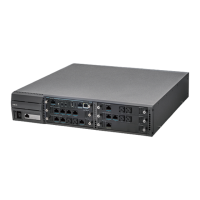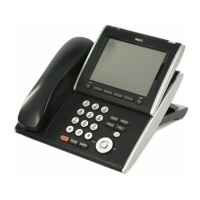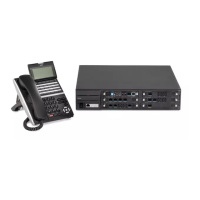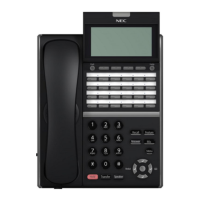Issue 2.0
5-10 Network Design Considerations
The common scenario for remote IP deployment is:
Implementation of an IP Phone with a public IP address talking with an
UNIVERGE SV9100 behind NAT. An example would be a telecommuter.
Implementation of an IP Phone behind a NAT, which connects to the Internet,
terminates in a UNIVERGE SV9100 behind a different NAT.
When selecting VPN equipment it is important to consider Quality of Service.
Generally, VPN hardware is connected to Internet connections which are
unreliable and out of the control of the customer. However, it is possible to set
prioritization on some VPN units for voice traffic. This does not solve the
unreliability of the Internet, but helps to ensure that the data traffic to and from
the LAN do not impair the quality of the voice traffic. (Refer to Section 2 QoS on
page 5-1).
NEC strongly recommends that any VPN hardware used for VoIP has the
facility to prioritize voice traffic.
SECTION 5 CODEC AND BANDWIDTH
This section describes CODEC and bandwidth and their application with the
UNIVERGE SV9100 system.
5.1 CODECs
CODEC (COder/DECoder) uses the technology of encoding and decoding a
signal. For VoIP, this specifically refers to the algorithm used to convert analog
speech to digital data for transmission on an IP network.
The UNIVERGE SV9100 system supports three different CODECs:
G.711
This is the ITU-T recommendation for coding of speech at 64kbps using PCM
(pulse code modulation). This CODEC is often described as uncompressed as it
uses the same sampling rate as Time-Division Multiplexing (TDM). G.711 has a
MOS
2
score of 4.2 but uses a large bandwidth for transmission. This CODEC is
not commonly used due to the bandwidth required, although it can be
acceptable in LAN environment (i.e., IP Phones connected over a 100Mbps
LAN).
G.722
G.722 is an ITU standard CODEC that provides 7kHz wideband audio at data
rates from 48 to 64kbps. This is useful in a fixed network Voice Over IP
applications, where the required bandwidth is typically not prohibitive, and offers
a significant improvement in speech quality over older narrowband CODECS
such as G.711, without an excessive increase in implementation complexity.
2. The Mean Opinion Score (MOS) provides a numerical measure of the quality of human speech at the destination end
of the circuit. The scheme uses subjective tests (opinionated scores) that are mathematically averaged to obtain a
quantitative indicator of the system performance.

